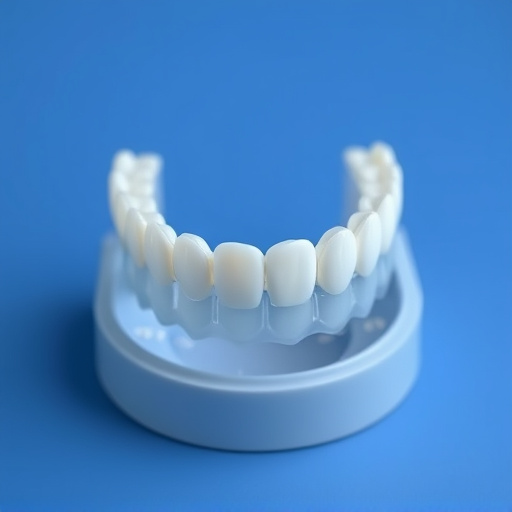Shockwave tendonitis, caused by repeated stress or strain, leads to inflammation and pain in various joints. Symptoms include sharp or dull pain, tenderness, stiffness, swelling, and decreased range of motion, exacerbated by movement. Effective relief strategies include therapeutic exercises, lifestyle adjustments, and innovative treatments like shockwave therapy, which offer hope for managing symptoms and improving quality of life. Clinical research has proven shockwave therapy successful in treating shockwave tendonitis and associated soft tissue injuries, providing a non-invasive alternative to traditional treatments. Self-care strategies such as ice packs, rest, pain relievers, and approved stretching exercises, combined with prescribed therapies like shockwave therapy, accelerate recovery and effectively relieve neck pain.
“Experience lasting shockwave tendonitis relief with evidence-based methods. This comprehensive guide delves into the condition, exploring its causes and symptoms while shining a spotlight on clinical research-backed treatments. From professional therapies to self-care strategies, discover effective ways to combat pain and inflammation associated with this common yet challenging condition. Learn how you can regain mobility and comfort through targeted interventions.”
- Understanding Shockwave Tendonitis: Causes and Symptoms
- Clinical Research-Backed Relief Methods
- Effective Self-Care Strategies for At-Home Treatment
Understanding Shockwave Tendonitis: Causes and Symptoms

Shockwave tendonitis is a condition characterized by inflammation and pain in tendons due to repeated stress or strain. It’s commonly experienced in areas like the elbow, shoulder, knee, or heel—body parts that bear significant weight or undergo frequent motion. The disorder often arises from overuse during physical activities or sudden increases in training intensity. Symptoms manifest as sharp or dull pain, tenderness, and stiffness around the affected joint, typically worsening with movement or prolonged activity.
Individuals suffering from shockwave tendonitis may also notice swelling, redness, and decreased range of motion. Joint pain relief is a primary concern for many patients. Therapeutic exercises targeting specific muscle groups can help manage symptoms, alongside lifestyle adjustments to reduce recurring strain. In some cases, sciatica relief techniques might be employed to alleviate associated leg pain. Clinical research continues to explore innovative treatments, including shockwave tendonitis relief methods, offering hope for effective management and improved quality of life for those affected by this condition.
Clinical Research-Backed Relief Methods

Clinical research has played a pivotal role in unearthing effective shockwave tendonitis relief methods. Among the evidence-based options, shockwave therapy stands out as a game-changer in managing this condition. Numerous studies have demonstrated its efficacy in treating not only shockwave tendonitis but also associated soft tissue injuries. This non-invasive approach uses focused sound waves to stimulate tissue repair and promote healing, offering a promising alternative to traditional treatments for neck pain relief and other related symptoms.
Beyond shockwave therapy, clinical trials have also backed the use of specific exercise protocols and physical therapy techniques tailored for shockwave tendonitis patients. These methods, supported by rigorous research, provide comprehensive solutions for managing inflammation, improving flexibility, and restoring strength in affected areas. By combining these evidence-based strategies, individuals suffering from this condition can expect significant improvements in their overall comfort and functional abilities.
Effective Self-Care Strategies for At-Home Treatment

Managing shockwave tendonitis at home is feasible with the right self-care strategies. One effective approach involves applying ice packs for 15-20 minutes, several times a day, to reduce inflammation and alleviate pain associated with the condition. Resting the affected area and avoiding activities that aggravate symptoms are also crucial steps in shockwave tendonitis relief.
Additionally, over-the-counter pain medications like ibuprofen can help manage discomfort. Stretching exercises specifically targeting the affected tendon, when approved by a healthcare professional, can aid in improving flexibility and range of motion. Incorporating these at-home practices into your daily routine, alongside any prescribed medication or therapy, such as shockwave therapy for injury rehabilitation, can significantly contribute to effective neck pain relief and overall recovery.
Shockwave tendonitis relief is achievable through a combination of clinical research-backed methods and effective self-care strategies. By understanding the causes and symptoms of this condition, individuals can navigate their treatment options with confidence. Clinical trials have validated several methods, including shockwave therapy, as promising avenues for pain reduction and healing. Additionally, at-home treatments such as rest, ice, compression, and elevation (RICE), along with gentle exercises and over-the-counter medications, can significantly contribute to shockwave tendonitis relief. Incorporating these strategies into a holistic approach ensures a comprehensive and effective path to recovery.














